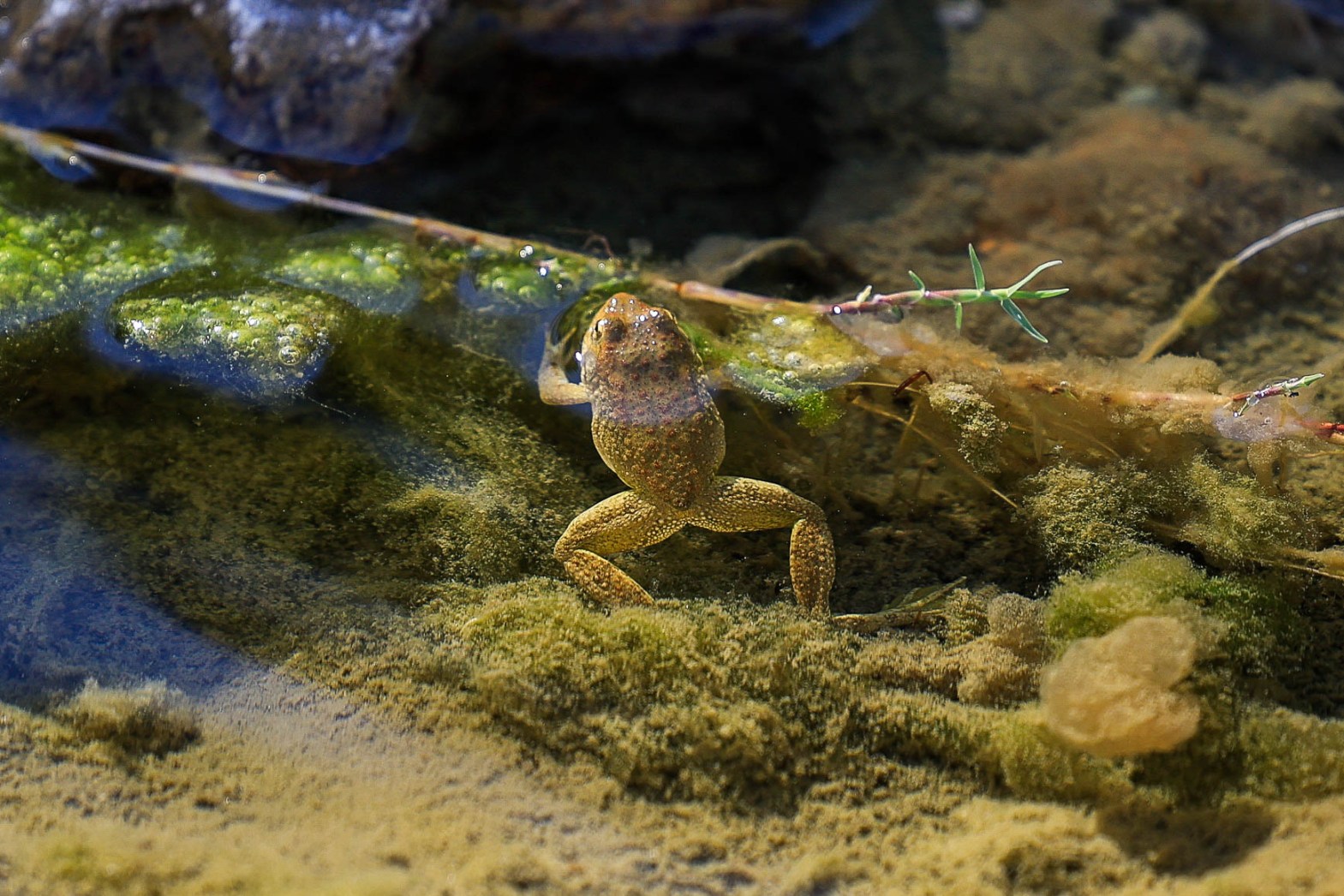

A yellow-legged frog in its habitat rests on algae and a stick in San Benito County, Calif., on Saturday, Oct. 28, 2023. The yellow-legged frog is considered an endangered species federally and at the state level. (Ray Chavez/Bay Area News Group)
Frogs leaped into the air and swam for cover as Paul Johnson strolled toward a stream crossing, a Jeep crawling slowly behind him. As the SUV climbed into the Griswold Hills from the San Joaquin desert, it crossed the creek another five times. Each time, Johnson, a wildlife biologist with the National Park Service, got out and shooed away dozens of frogs before the vehicle splashed through.
Clear Creek, about 30 miles east of King City, is one of the few remaining strongholds of the Central Coast population of the foothill yellow-legged frog. Once found in streams from the Bay Area to Fresno County, the species was placed on the federal endangered species list in late August — which explains Johnson’s extreme caution.
Johnson and his colleague at the Jeep’s wheel, Mike Westphal, a Bureau of Land Management biologist, are part of a small band of researchers hatching an ambitious amphibian comeback. Eventually, they hope that frog eggs from the creek can be used to re-establish populations of the frog in suitable habitats within its historic range.
The foothill yellow-legged frog, typically only a couple of inches long, is named for the bright color on the underside of its legs. Viewed from above, a mottled gray-brown to reddish body helps it blend into the rocky stream beds that it inhabits from Southern California to the northern Sierra Nevada.
The frogs have faced many threats, including habitat destruction, pollution and loss of eggs, which are often washed away when dams release large volumes of water after heavy rains.
But the biggest problem, according to Andrea Adams of UC Santa Barbara’s Earth Research Institute, has been a highly infectious fungus — the chytrid fungus — that has spread across the globe since the 1970s, decimating amphibian populations with a deadly skin disease.
After interviewing older naturalists, poring over field notes pulled out of garages and attics, and sampling for the fungus in museum specimens, Adams found that the fungus caused the frog to almost completely disappear from Southern California in less than 10 years in the mid-20th century.
Foothill yellow-legged frogs are also preyed on by snakes and bullfrogs, which spread the deadly […]
Full article: www.montereyherald.com
Clean water is essential for life, yet millions of Americans unknowingly consume contaminants through their…
Human brains contain higher concentrations of microplastics than other organs, according to a new study, and the…
From the Office of the Governor: In anticipation of a multi-day, significant atmospheric river in Northern California,…
From Governor Newsom: Scientists, water managers, state leaders, and experts throughout the state are calling…
Photo: A harmful algal bloom in Milford Lake, Kansas, made the water appear bright green.…
An expanded plastic foam coffee cup is at a donut shop in Monterey Park, California.…